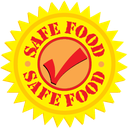Safe Food for Babies and Children: Choking Dangers (FN664, Revised June 2021)
Availability: Web only
 Every child is at risk of choking. Older infants and children less than 5 years old easily can choke on food, toys and household objects. A single choking incident may result in death, permanent brain damage due to lack of oxygen and other complications associated with airway blockage.
Every child is at risk of choking. Older infants and children less than 5 years old easily can choke on food, toys and household objects. A single choking incident may result in death, permanent brain damage due to lack of oxygen and other complications associated with airway blockage.
Children and infants do not grind or chew their food well and may attempt to swallow food whole. Large pieces of food easily can lodge in the throat and result in choking. Children are likely to choke on small, round, pliable objects that conform to the shape of the throat. The following foods and household items can be choking hazards:
Common Choking Hazards
Foods
- Hot dogs and sausages

- Chunks of meat or cheese
- Whole grapes
- Hard, gooey or sticky candy
- Popcorn
- Peanuts and nuts
- Raw carrots
- Fruit seeds
- Apple chunks
- Chewing gum
Household Items
- Coins
- Toys with small parts
- Small balls and marbles
- Balloons
- Arts and crafts material
- Ballpoint pen caps
- Watch batteries
- Jewelry
Choking Prevention Tips
- For infants to age 1, cut up foods into small pieces no larger than ¼-inch. Toddlers generally can eat foods cut in ½-inch pieces or slightly larger.
- Watch infants and young children when they are eating. Eating while walking, running or laughing may lead to a choking incident.
- Parental supervision during mealtime is essential. Remind children to chew food thoroughly, take small bites and eat slowly. Siblings should not be put in charge of feedings.
- Keep dangerous toys, foods and household items out of children’s reach.
- Learn how to provide emergency first aid for choking infants and children. The American Heart Association and American Red Cross provide courses on basic life support and CPR.
For more information on choking, visit the American Academy of Pediatrics website at www.aap.org. For more information on nutrition and food safety, visit the NDSU Extension website: www.ag.ndsu.edu/food

